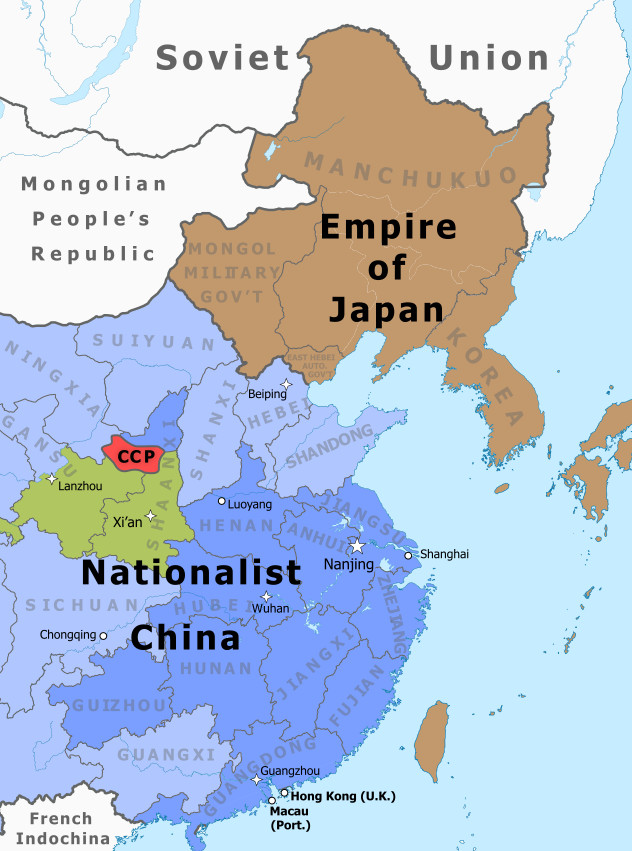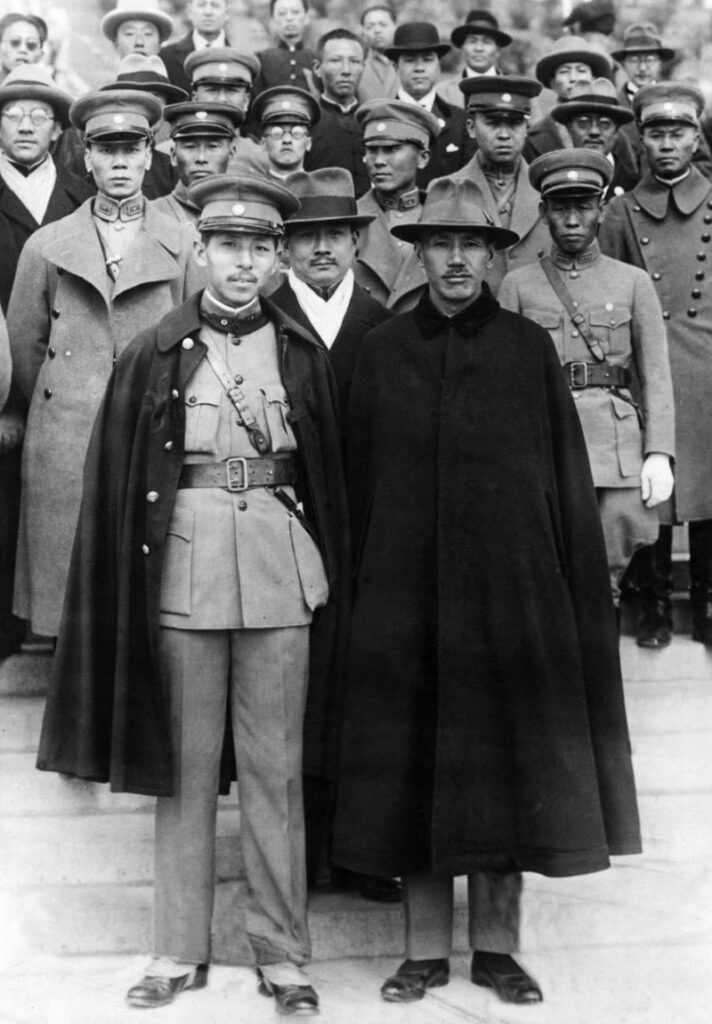The Xi’an Incident in 1936 significantly disrupted Chiang Kai-shek’s campaign to defeat the Chinese Communists. As the leader of the Nationalist Kuomintang (KMT), Chiang had prioritized eliminating the Communist forces led by Mao Zedong during the Chinese Civil War. However, on December 12, 1936, he was kidnapped in Xi’an by General Zhang Xueliang (commonly known by his nickname “the Young Marshal”), with the support of General Yang Hucheng. Both generals were increasingly frustrated with Chiang’s insistence on internal conflict while Japanese aggression continued to escalate.

China before the Xi’an Incident
The conspirators demanded that Chiang end the civil war and instead form a united front with the Communists to resist Japan. After tense negotiations – led in part by Communist envoy Zhou Enlai – Chiang reluctantly agreed to shift his focus toward resisting Japanese expansion. This decision ultimately led to the formation of the Second United Front in 1937, a tenuous alliance between the KMT and the Communists. As a result, Chiang temporarily suspended large-scale military operations against the Communists, allowing them to consolidate power and strengthen their base in northern China – an outcome that may have saved them from a potentially devastating Nationalist offensive.
Although the Nationalist forces remained stronger on paper, the incident compelled Chiang to turn his attention to the broader threat of Japanese invasion, especially following the full-scale outbreak of the Second Sino-Japanese War in July 1937. The breathing room gained by the Communists proved critical, enabling them to expand their influence in rural areas – ultimately contributing to their eventual victory in 1949.

Zhang Xueliang with Chiang Kai-shek a few years before the Xi’an Incident
Had Chiang continued to prioritize the Communist threat, it likely would have played into Japanese hands. His “internal pacification first” policy had already weakened China’s capacity to resist Japan, whose aggression had begun with the invasion of Manchuria in 1931 and escalated rapidly in the mid-1930s. A continued civil war would have further fragmented Chinese resistance, leaving Nationalist forces overstretched and uncoordinated. This disunity could have allowed Japan to seize additional territory more swiftly, including key regions such as North China or the Yangtze River valley.
The Second United Front, though fragile and marked by deep mutual mistrust, disrupted Japan’s plans by creating a more cohesive Chinese resistance. While the KMT and Communists never fully unified their military efforts, they coordinated enough to apply pressure on multiple fronts. The Communists conducted guerrilla warfare in northern China, tying down Japanese forces in the countryside, while the Nationalists fought major conventional battles, such as the defenses of Shanghai and Wuhan. This dual resistance strained Japanese resources and slowed their advance. It also boosted Chinese morale and attracted international sympathy, which proved vital in securing foreign aid. In short, continuing the civil war would have left China dangerously divided and vulnerable. The Xi’an Incident, by forcing a temporary KMT-Communist alliance, bought time and space for Chinese forces to regroup, frustrating Japanese ambitions and strengthening China’s long-term resistance.
Credits: Eastern China in December 1936, on the eve of the Xi’an Incident: Author: SilverStar54 License: https://creativecommons.org/licenses/by-sa/4.0/deed.en